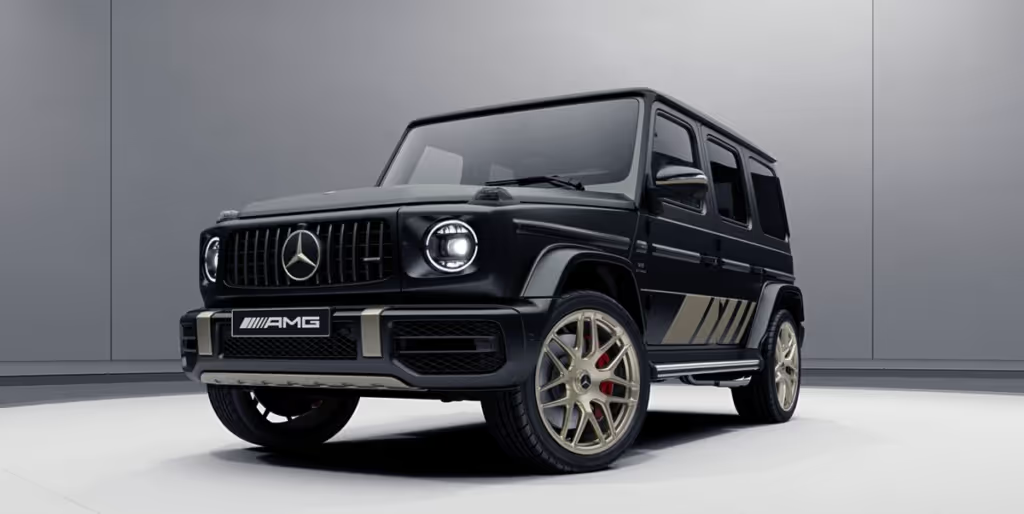Few vehicles have stood the test of time quite like the Mercedes G Class. Known for its rugged design, uncompromising performance, and unmistakable silhouette, the G Wagon has carved a legacy that bridges military heritage with modern luxury.
But what exactly makes this SUV a global icon? Let’s take a closer look at how the G Class evolved from a utilitarian off-roader to a collector’s favorite—and why it remains one of the most respected 4x4s in the automotive world.
Origins in Utility: The G Class as a Military Workhorse
The story of the G Class begins in the early 1970s, when Mercedes-Benz partnered with Austrian manufacturer Steyr-Daimler-Puch to create a highly capable all-terrain vehicle. The goal? Build a military-grade SUV that could handle extreme conditions while maintaining mechanical reliability.
In 1979, the Gelandewagen—German for “cross-country vehicle”—was born. It was initially used by military forces, featuring a boxy design, solid axles, a ladder-frame chassis, and minimal interior comforts. Built for function, not fashion, it earned a reputation for conquering tough terrain across Europe, the Middle East, and Africa.
These early models laid the foundation for what would become a legend.
Transition to Civilian Luxury
Mercedes saw potential beyond the battlefield. In the same year it launched the military G, the company introduced a civilian version aimed at farmers, forestry workers, and adventurers.
The early civilian G Wagons retained their rugged roots but offered a more refined cabin and improved comfort. Over the decades, the model evolved—slowly embracing luxury without losing its off-road DNA.
By the 1990s and 2000s, high-profile clientele, including celebrities, athletes, and global leaders, began adopting the G Wagon. Leather interiors, chrome trims, powerful engines, and onboard tech transformed it into an upscale SUV that could go from the trail to a red carpet.
Engineering That Stands the Test of Time
What truly sets the G Class apart is its engineering integrity. While most modern SUVs have moved to unibody construction for comfort and fuel efficiency, the G Wagon maintains a body-on-frame design—a structure more commonly seen in trucks.
Its performance is equally impressive. Key features like full-time 4WD, three locking differentials, and high ground clearance give it serious off-road chops. These systems aren’t just for show—they’re purpose-built, allowing drivers to navigate snow, sand, mud, and mountains with ease.
For custom builders and restorers, this foundation is gold. The vehicle’s structural integrity and mechanical simplicity make it ideal for high-end restorations that preserve the soul of the original while upgrading performance.
Cultural Impact and Global Popularity
From military transport to luxury staple, the G Class has secured its place in pop culture.
It’s not uncommon to see G Wagons in music videos, movies, or luxury car collections. Celebrities like Arnold Schwarzenegger, Kim Kardashian, and Drake have all been spotted behind the wheel. Its blend of power, prestige, and personality makes it a magnet for public figures and car enthusiasts alike.
More than just a luxury item, the G Wagon has become a symbol of individuality. It’s a statement vehicle—bold, classic, and unapologetically distinct.
Customization, Restorations, and Modern Variants
In recent years, the G Wagon has found new life through custom restorations and restomods. Enthusiasts and collectors are seeking early-model Gs—from the 1980s and 1990s—and commissioning full rebuilds with upgraded drivetrains, interiors, and suspension systems.
The appeal lies in owning a piece of history—built to modern standards. Many restorers are incorporating marine-grade materials, LED lighting, infotainment upgrades, and even convertible configurations, all while maintaining the G’s rugged character.
For a deeper look at the history, evolution, and restoration of the Mercedes G Class, this guide offers expert insight into why the vehicle remains one of the most iconic off-roaders in automotive history.
Whether it’s about restoring an original diesel-powered model or reconfiguring a military spec G for civilian adventure, today’s restorers are helping preserve the vehicle’s story—one bolt at a time.
The Modern G Class: Innovation Meets Tradition
In 2018, Mercedes-Benz unveiled the first major redesign of the G Class in decades. While the styling stayed true to its roots—boxy frame, rear-mounted spare tire, exposed indicators—under the skin, everything changed.
The new G models feature an independent front suspension, more efficient engines, and significantly improved handling and comfort. Interior updates include digital displays, advanced driver-assist systems, and plush materials worthy of a flagship luxury SUV.
Yet even with these advancements, the modern G still carries the same essence that made it famous—unmatched off-road capabilities, commanding road presence, and timeless design.
Final Thoughts: Why the G Class Legacy Endures
The Mercedes G Class isn’t just an SUV. It’s a symbol of enduring craftsmanship, rugged performance, and unmatched versatility.
From its military roots to its role in modern luxury, the G Wagon has earned a place in automotive history. Its appeal spans generations, cultures, and lifestyles—making it more than just a vehicle.
It’s a legacy. One that continues to inspire, perform, and evolve.
